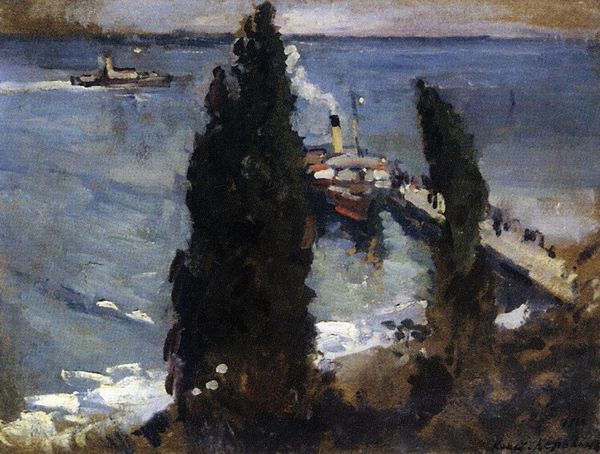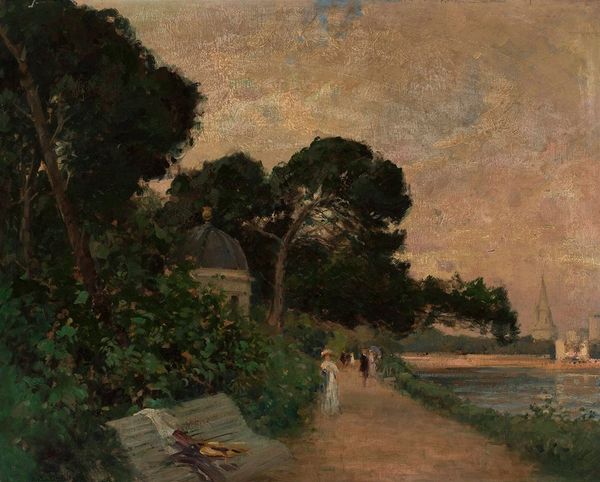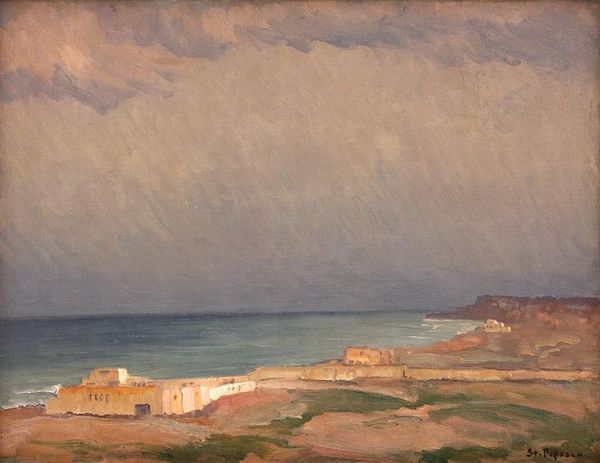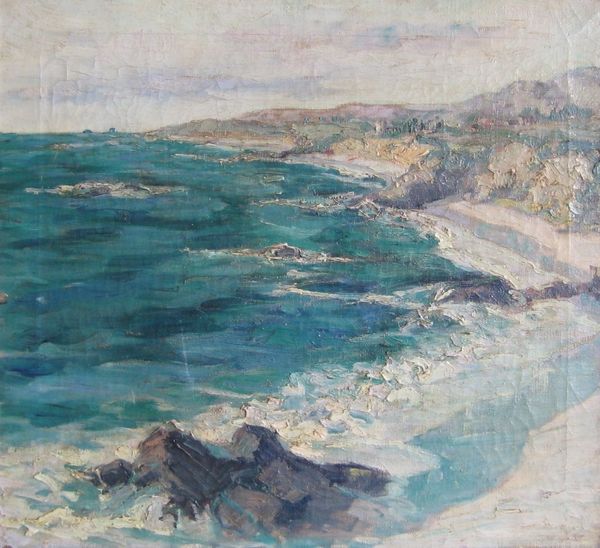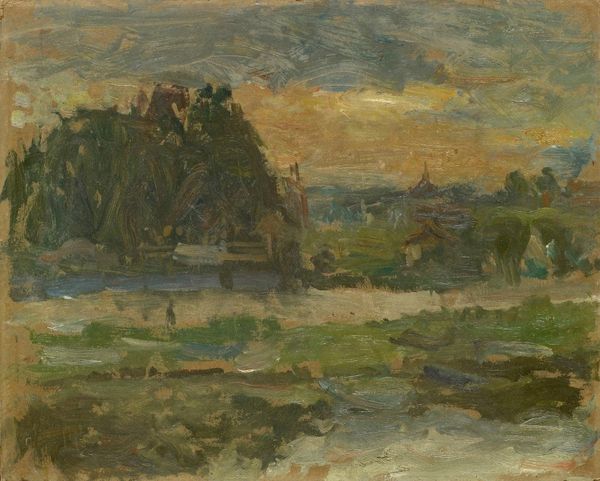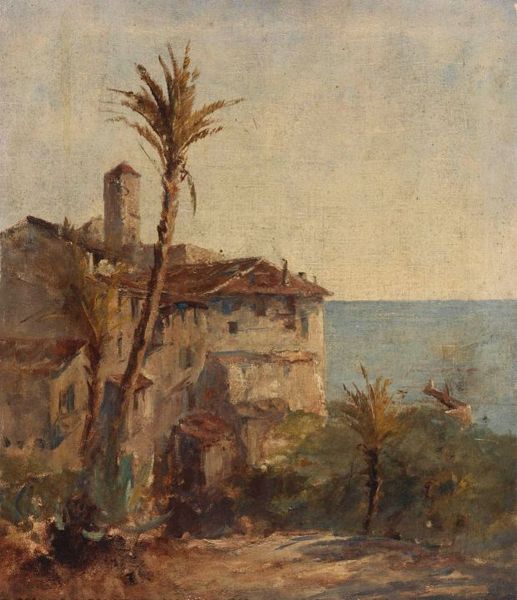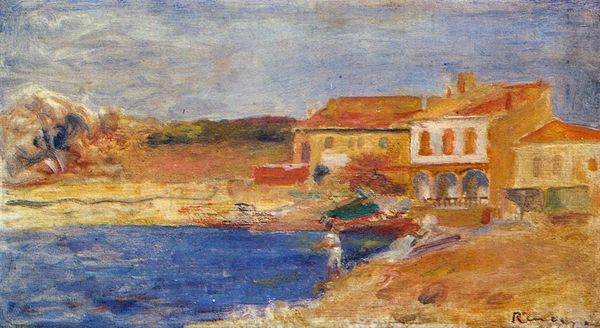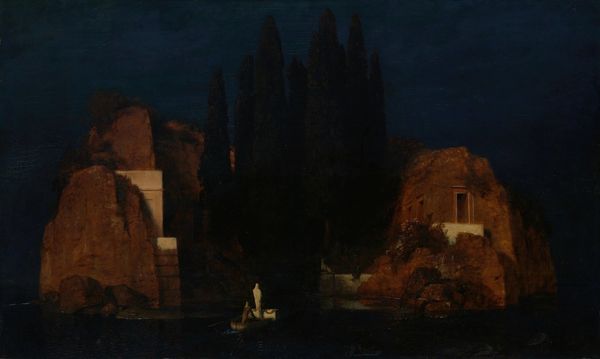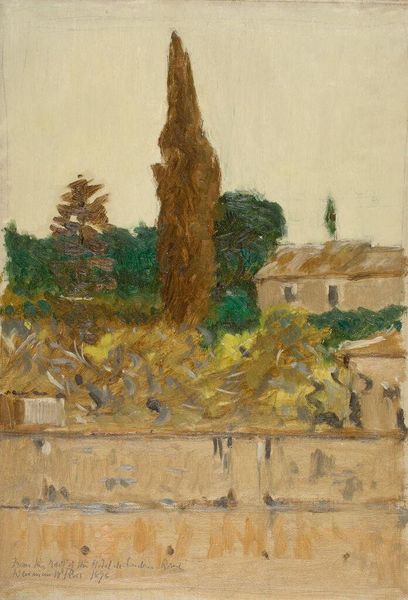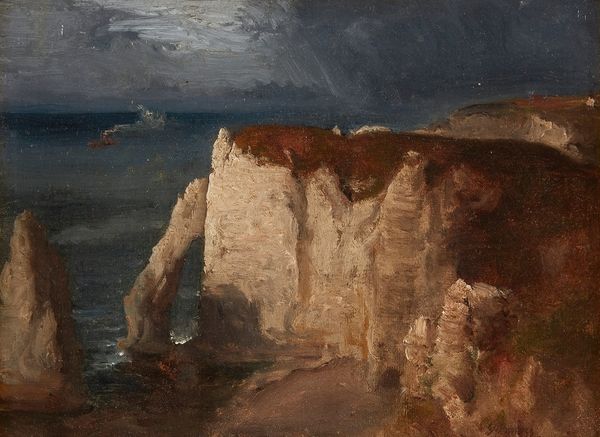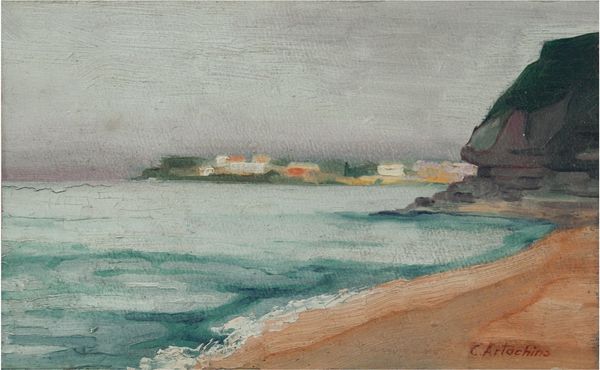
Dimensions: 62 x 74 cm
Copyright: Public domain
Editor: Arnold Böcklin’s “Villa by the Sea,” created in 1864, strikes me as melancholic. It's like a stage set for a forgotten drama. Painted in oil, the brushwork is loose, and a foreboding stillness hangs in the air. How do you interpret the power of composition in creating such a mood? Curator: Indeed. Note the tripartite structure: the rugged foreground with its overgrown barrier, the stark, geometrical villa perched on the clifftop, and the oppressive, ambiguous sky. Consider, too, how the subdued palette serves not to illuminate but to conceal, muting tonal contrasts, drawing focus on the architectural motif. Would you not agree? Editor: Yes, the muted tones definitely contribute to the somber mood, and the geometrical contrast emphasizes it. It's interesting how the classical villa feels so out of place and time. Curator: Precisely. The formal tension between the geometric villa and the naturalistic landscape evokes a conflict—a questioning of rationalism in a space dominated by the sublime power of nature. Does the geometry speak to any semiotic order? What signs do you decode? Editor: Well, I immediately want to connect it with death, because it evokes Romantic themes of ruins and the ephemeral. However, focusing on formal qualities, I see that Böcklin perhaps creates tension through visual syntax itself? Curator: Indeed, a fine point. And that semiotic friction, you see, lies in the very success of this haunting piece. Böcklin juxtaposes formal elements and their connotations to create a powerful psychological effect. Editor: I’m starting to appreciate the sheer precision in achieving that kind of impact. So much more is being said here through pictorial devices. Curator: Yes, visual composition, in concert with motif, is the very soul of Böcklin's villa. I am delighted we have observed this together.
Comments
No comments
Be the first to comment and join the conversation on the ultimate creative platform.
